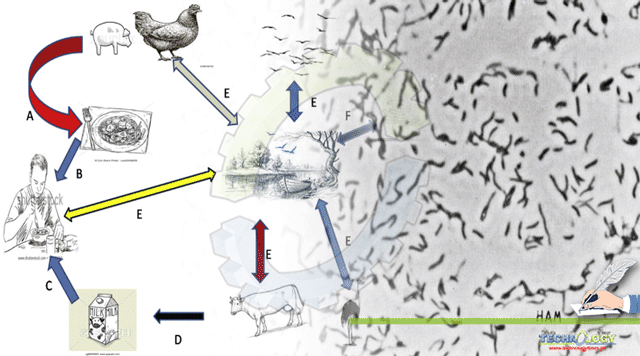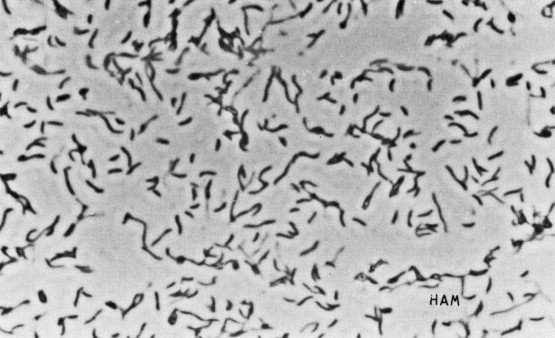Pakistan is endowed with a huge livestock population that is well adapted to its environmental conditions. According to Pakistan economic survey (2019-20), over 08 Million families are directly involved in livestock production activities for income generation.

By Wafa Yousuf
Background
During the year 2019-20, the share of livestock in national GDP and agricultural GDP has been recorded as 11.69% and 60.56 % respectively.The poultry sector is one of the most vibrant subsector of the livestock sector. The currentinvestment in Poultry Industry is more than Rs 700 billion. This industry is progressing at animpressive growth rate of 8% per annum over the last few years. Pakistan has become the11th largest poultry producer in the world with the production of 1,163 million broilersannually. Poultry meat production showed a growth rate of 9.1during2019-20 as compared to the previous year.
Profitable Poultry farming faces several challenges including infectious and zoonotic diseases.Campylobacteriosis is a major food-borne zoonotic disease throughout the world. In the last decade, the number of cases of campylobacteriosis has been increasing in humans. The infection in humans are mainly associated with consumption of undercooked chicken consumption of improperly cooked meat, raw milk, and untreated water are other transmission routes.According to the world health organization, Campylobacter is 1 of 4 key global causes of diarrheal diseases throughout the world. These organisms are also part of the avian species that are used for human consumption as a protein source.
Causative Agent
Campylobacteriosis is caused by a gram negative Bactria called as Campylobacter. There are many species of Campylobacter but two most important species, Campylobacter jejuni and Campylobacter coli involved in food-borne zoonosis. Campylobacter is a fastidious bacterium in nature and required microaerophilic conditions to grow. These are curved shape microorganism under microscope.

Fig 01: Microscopic Examination of Campylobacter specie (Adapted from “Diagnostic Procedure in Veterinary Bacteriology and Mycology”, Fifth Edition)
Epidemiology and Transmission
The Campylobacter organism remains in the bird’s intestine throughout its life span. The organism is the normal reservoir of poultry birds and do not cause disease in poultry. But if the load of microorganism is more than normal, it may cause diarrhea in poultry birds. The immune compromised or diseased birds can be infected as a secondary infection. It is transmitted to humans through poultry meat contaminated with intestinal contents or undercooked meat is being used. The route of transmission of Campylobacter infection is fecal-oral route. It may be transmitted by contaminated fomites, direct contact or consumption of contaminated water. In poultry birds, the transmission of campylobacter is horizontal (direct contact of healthy birds with infected birds). The non-chlorinated water (raw or contaminated water) is also considered as a vehicle of infection followed by intra-flock dissemination. The vertical route of transmission from parents to offspring’s is uncommon and birds at the age of approximately 2 weeks are considered as campylobacter positive.

Fig 02: Transmission routes of Campylobacter infection (Adapted from (Heliyon volume 5 issue 11 November 2019, e02814)
Clinical Signs
In most of the cases, the Campylobacteriosis is self-limiting but in some cases it may cause gastroenteritis, severe diarrhoea, pancreatitis, cholecystitis, peritonitis Guillain barre and may cause death in immune-compromised children. The incubation period of the campylobacteriosis is 1-7 days. The body temperature may rise to 104℃. Diarrhoea may recover within 3-4 days but the abdominal pain and cramps may become persistent. The infection may recover within 7 days. Initial symptoms may include fever, headache, and abdominal pain with diarrhoea or loose bowel movement. Campylobacteriosis is not a clinical disease in the case of poultry birds. These organisms normally harbour the intestine of the birds but these are nonpathogenic. It has been reported that some strains of campylobacter e.g. campylobacter jejuni involve in the enteritis of the newly hatched chickens. A new strain of campylobacter known as C.hepaticushas been identified as a causative agent of the spotty liver syndrome in layer birds. The poultry itself is not infected with the pathogen but its meat in involved in the transmission and development of infection to the human population that is alarming to the public health.

Fig 03:Campylobacter jejuni colitis gross lesions (Adapted from MSD Veterinary Manual)
Diagnosis
Preliminary Diagnosis is based on clinical signs, history and postmortem findings.A pure culture is required for confirmatory tests, but a preliminary confirmation can be obtained by directmicroscopic examination of suspect colony material. The material from a suspect colony is suspended insaline and evaluated, preferably by a phase-contrast microscope, for characteristic, spiral or curvedslender rods with a corkscrew-like motility. Older cultures show less motile coccoid forms. Detection of oxidase can be performed bytaking material from a suspect colony and place it on to a filter paper moistenedwith oxidase reagent. The appearance of a violet or deep blue colour within 10 seconds is a positivereaction.The Latex agglutination testsfor confirmation of pure cultures of C. jejuni/C. coli are commercially available.
Treatment
As the disease is self-limiting in humans, there is no need of any kind of therapy to cure the infection. In worse infections, antibiotics may be used to overcome the bacterial load. These antibiotics may include Macrolides, Aminoglycosides, Quinolones, Fluoroquinolones and tetracycline. The frequent and irregular use of these antibiotics is leading towards the development of resistance against antibiotics. This has become another emerging threat to both poultry and medical fields. There are no vaccines specifically developed for C. jejunior C. coli in animals or birds.
Guidelines / Recommendation
There is a need to sit on a table for the veterinarians, farmers and medical doctors to discuss the importance of antibiotic resistance and to overcome the problem by the good usage of antibiotics. There is also a need to develop hygienic environment to produce the healthy poultry meat for public and to aware people about meat consumption, meat handling and proper use of antibiotics in case of infection development.
Authors : Wafa Yousuf,Tyyba Arshad, Usman Waheed, Syed Ehtisham Ul Haque, Muhammad Adnan Saeed University of Veterinary & Animal Sciences, Lahore (Jhang Campus) 12 Km, Chiniot Road, Jhang Sub-campus UVAS, Lahore-54000, Pakistan email; wafayousaf94@gmail.com